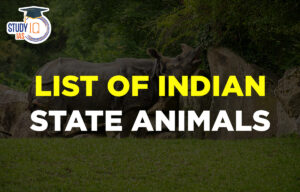Table of Contents
Context: NITI Aayog has recently published a report titled “Production and Promotion of Organic and Biofertilizers with Special Focus on Improving Economic Viability of Gaushalas”.
About Making Gaushalas Atmanirbhar Report
- The report focuses on Improving the Economic Viability of Gaushalas or cow shelters, thereby making the Gaushalas Atmanirbhar.
- It aims to address the problem of stray and abandoned cattle and effective utilization of cow dung and cow urine in agriculture and energy sectors.
- It recommends Capital Assistance to Cow Shelters to promote Dung-Based Fertilizers for Agriculture, thus promoting Natural Farming.
Key Highlights of Making Gaushalas Atmanirbhar Report
What are Gaushalas?
- According to the Bureau of Indian Standards a gaushala is a protective shelter, abode, or sanctuary for cows, set up to improve their health and life, sell pure milk and cow products, conserve germplasm, and stop animal cruelty.
- By offering care and shelter, these gaushalas perform the critical function of preventing the suffering of cattle.
- Gaushalas are also known by names like pinjrapole, kanji house, gauvatika etc., and are spread throughout the country.
- Their origin can be traced to the Vedic period, when the emphasis was on protection, preservation and development of cows.
- At present there are above 5000 gaushalas in India, out of which, 1837 are recognised under the Animal Welfare Board of India (AWBI).
- AWBI is the statutory body of the ‘Prevention of Cruelty to Animals Act’ 1960 (PCA).
- Gaushalas receive financial support and management advice from the AWBI.
Why are Gaushalas Required?
- To House the Unproductive Cattle: Male cattle, along with old and unproductive indigenous cows, make up the potential candidates for admission in Gaushalas (cow shelters) in India. This is based on the 20th Livestock census, which reported a total cattle population of around 19 crores in India, with approximately 25% (4.7 crores) being male.
- Increase in Milk Production: Over the past 30 years, as dairy farming became more intensive, there has been a yearly increase of 4.45% in total milk production and 2.85% in per capita milk availability since 1991-92.
- Rise in Cattle Population: Total cattle population in the country increased by 0.8% during 2012-2019 while it decreased by about 4% during 2007-123.
- Abandoning of Cattle by the Farmers: There is a lack of interest in upkeep of male and unproductive cattle by the farmers once they pass their milking stage which to them becomes uneconomical to feed as a result of which the farmers often abandon such cattle which are eventually seen freely roaming in rural and urban areas often ending up at the slaughterhouses.
- Increase in Road Accidents: According to the Ministry of Road Transport & Highways, stray animals caused 1604 road accidents in India, with the highest being in Gujarat, followed by Jharkhand and Haryana.
- Ban of Cattle Exports: Many of the states in India have banned cattle exports making it even harder to manage the huge population of old, unproductive cows and male cattle.
Types of Gaushalas
Gaushalas in India can be classified into four types based on their management regimes.
- Government-run gaushalas: These gaushalas are managed by the local government and house cows, male cattle, and buffaloes that are often picked up from the streets or surrendered by their owners. They are usually overcrowded and have poor facilities, with financial burden borne by the government.
- Privately-run gaushalas for animal rescue: These gaushalas house rescued bovines, mainly cows, transported for illegal slaughter. They also serve as helplines for rescue of injured animals. These gaushalas are overcrowded and under pressure to accept more animals.
- Privately-run gaushalas for conservation of native breeds: These gaushalas are conservation centers for indigenous cattle and follow progressive management practices. They house limited animals based on their capacity and have become resource and training centers for other gaushalas.
- Gaushalas run by religious institutions: These gaushalas are run by religious institutions and accept abandoned and unproductive animals from farmers. They operate similar to dairy farms, with the sale of milk being their main source of revenue. They also prepare and sell products made from cow dung and urine, and resist changes in traditional management practices.
Current Status of Funding of Gaushalas in India
- Gaushalas in India are primarily funded through donations from the general public, business entities, and a few corporates, as well as government grants and the sale of milk.
- Studies have shown that the majority of gaushalas’ income comes from private donations, while government grants and milk sales account for a smaller proportion.
- The main expenses of gaushalas are feed and fodder, followed by veterinary and medical expenses.
- While some gaushalas may be financially viable in the short term, many struggle to cover their operating expenses and are not financially sustainable in the long run.
Recommendations by the report for making Gaushalas Economically Viable
- Promote biofertilizer production: The report recommends that Gaushalas should be encouraged to produce biofertilizers by setting up dedicated biofertilizer production units. This will not only help in the economic viability of Gaushalas but also provide a natural source of fertilizers for farmers.
- Establish marketing channels: The report recommends that marketing channels should be established to ensure the economic viability of Gaushalas. This can be achieved by setting up partnerships with organic food companies or by direct marketing to farmers.
- PPP Models: The report has recommended various PPP models for the economic viability of Gaushalas in India.
- Create awareness and training: The report recommends that awareness should be created among farmers regarding the benefits of using organic and biofertilizers. Additionally, training programs should be conducted for Gaushala managers and farmers to learn the production techniques of biofertilizers.
- Develop organic farming techniques: The report recommends that organic farming techniques should be developed, which can reduce the dependency on chemical fertilizers and pesticides. This can be achieved by using cow dung and urine, as well as other organic materials, to produce biofertilizers.


 Daily Quiz 17 April 2025
Daily Quiz 17 April 2025
 Nilgiri Biosphere Reserve, Map, Climate,...
Nilgiri Biosphere Reserve, Map, Climate,...
 Complete List of Indian State Animals
Complete List of Indian State Animals





















